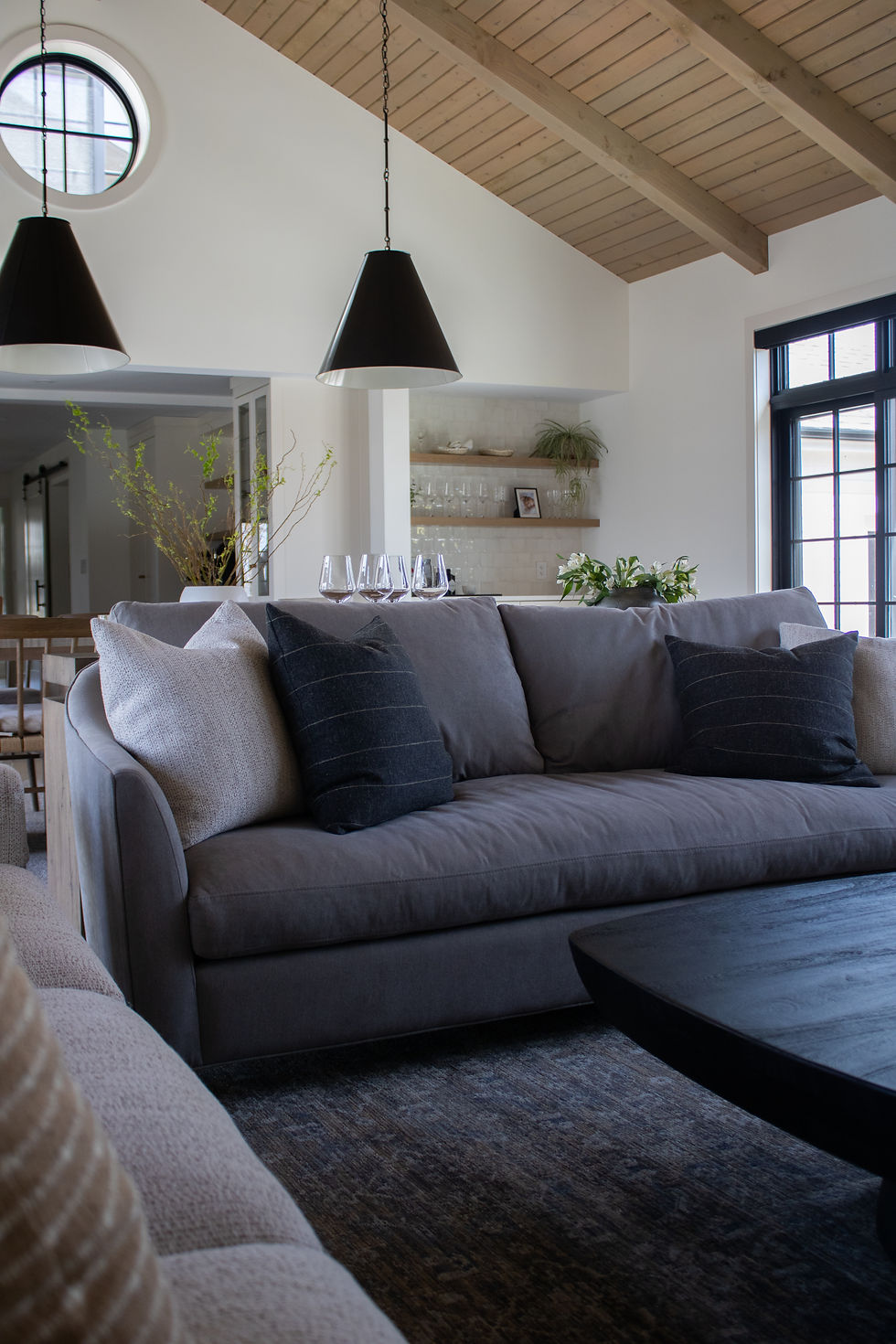Understanding VOCs in the Home
- plankandpineinteri
- 8h
- 3 min read
As conversations around wellness and healthy living continue to grow, one topic I’m discussing more often with clients is VOCs—what they are, where they come from, and how they impact the spaces we live in.
While the term often appears on paint cans or product labels, it’s rarely explained in a way that feels accessible. Yet VOCs influence everything from indoor air quality to how our homes make us feel.

What Are VOCs?
VOCs (Volatile Organic Compounds) are chemicals that release vapours at room temperature. While some occur naturally, many from building materials and furnishings can reduce indoor air quality and trigger headaches, allergies, or other health issues—especially in well-insulated homes during winter when windows stay closed.
Common Sources in the Home
VOC emissions show up more often than people realize. In residential design, the most frequent contributors include:
Paints & finishes
Millwork
Flooring (especially man-made products)
Textiles & performance fabrics
Furniture, upholstery, and foam cushions
While most products are safe once fully cured, it’s worth understanding how these materials perform and what alternatives exist to help you avoid VOC exposure.
Healthy Materials: What to Choose and Why
Paint
Paints rely on binders and solvents for flow, drying, and durability—but these ingredients are the main source of VOCs. Highly pigmented colours and high-gloss or oil-based paints typically emit more VOCs because they use more resins and tint. Matte and flat paints, which use fewer additives, generally off-gas less.
A healthier choice: Many brands are reducing VOC levels—Farrow & Ball offers low- or trace-VOC formulas, and Benjamin Moore’s Eco Spec line is designed to minimize off-gassing. Natural finishes like Venetian plaster, Roman clay, and Limewash generally contain no synthetic chemicals and can some even help absorb indoor pollutants because they are slightly porous.
Hot tip: For major interior paint projects, we always recommend that clients stay out of the home during application. Most off-gassing happens while the paint is wet, but some products—especially oil-based paints—can continue to release VOCs for weeks afterward.

Millwork
Millwork can be a significant source of VOCs due to the glues and adhesives used in engineered materials like MDF, melamine, and particleboard—another reason why your cabinetry construction is so important! Finishes such as paints, stains, and lacquers can add to off-gassing, even when low-VOC products are used.
A healthier choice: is solid wood or hybrid cabinetry with solid frames and low-VOC panels—solid wood tolerates moisture better and emits far fewer VOCs over time.

Flooring
Engineered and vinyl flooring can off-gas for several reasons. The composite cores—like MDF, HDF, or particleboard—contain resins that release VOCs, while backing layers and surface finishes such as polyurethane or acrylic coatings can add to emissions. Glue-down adhesives used during installation are another source, and heat or humidity can accelerate off-gassing.
A healthier choice: Choosing solid hardwood or low-VOC certified engineered flooring helps minimize these emissions and supports healthier indoor air (looking for certifications like CARB-compliant and FloorScore are helpful indicators of low VOC emission).

Textiles
Performance fabrics are popular for good reason—they’re durable and stain-resistant. However, most are chemically treated and can off-gas for years. Some, though, achieve performance through tightly woven natural fibres and off-gas far less.
A healthier option: is untreated natural materials like wool, linen, and cotton. At our studio, we especially love wool and linen: they don’t off-gas, are naturally mildew-resistant, and wool even absorbs airborne pollutants while also being water- and fire-resistant. Both of these alternatives last and often get better with age!

Furniture
Aside from frame construction and fabric selection, foam is often the biggest source of off-gassing in furniture. Most cushions and mattresses use polyurethane foam, which is naturally flammable. To meet fire safety regulations, manufacturers add chemical flame retardants—compounds that can off-gas for years.
Healthier choice: solid wood frames with natural latex, wool/feather-filled cushions, or low-emission CertiPUR-US certified foams. Sourcing vintage or antique pieces is also a great option, as they’re typically solid wood and any off-gassing has already occurred.

Certifications Worth Knowing
What should you look for when sourcing low VOC elements for your home? When evaluating products, these certifications help cut through confusing marketing language and identify truly healthier options:
GREENGUARD / GREENGUARD Gold – Indicates low chemical emissions for indoor use.
OEKO-TEX Standard 100 – Ensures textiles are free from harmful substances.
CertiPUR-US – Certifies foam products meet strict standards for emissions, durability, and content.
FloorScore - Certifies that flooring products emit low levels of VOC’s.
By choosing materials more thoughtfully, we can create homes that not only look and function beautifully but also support healthier living—something every homeowner deserves.



Comments